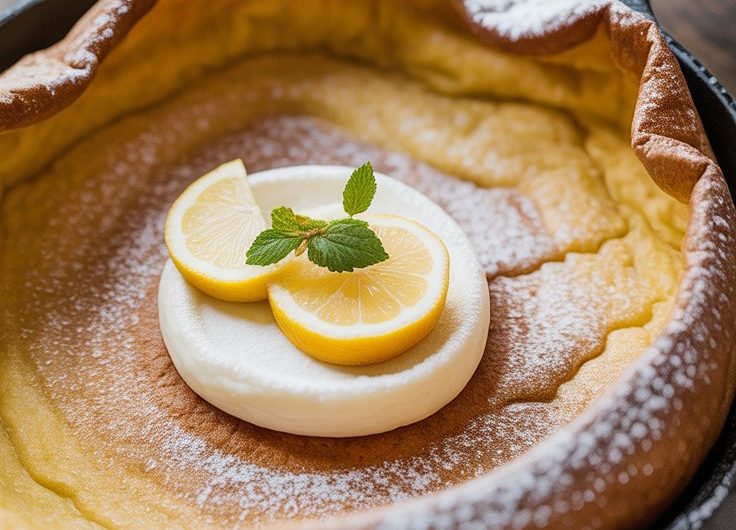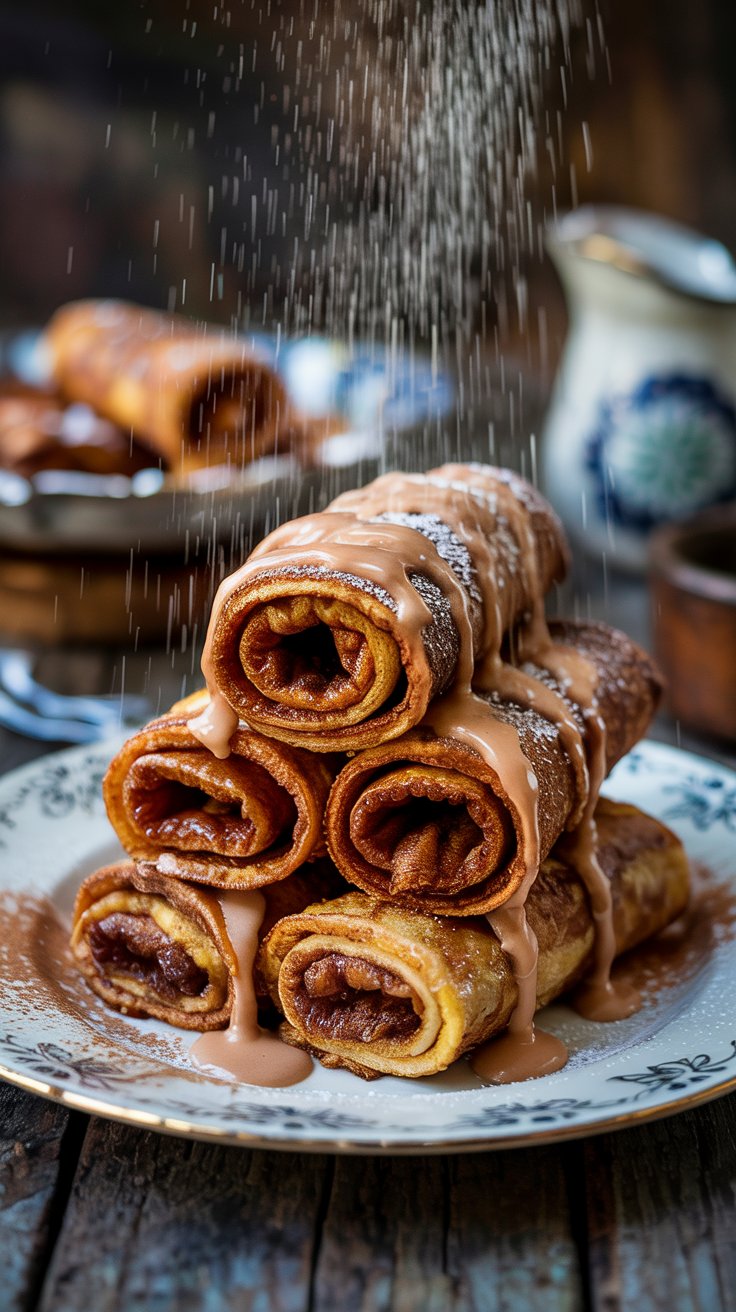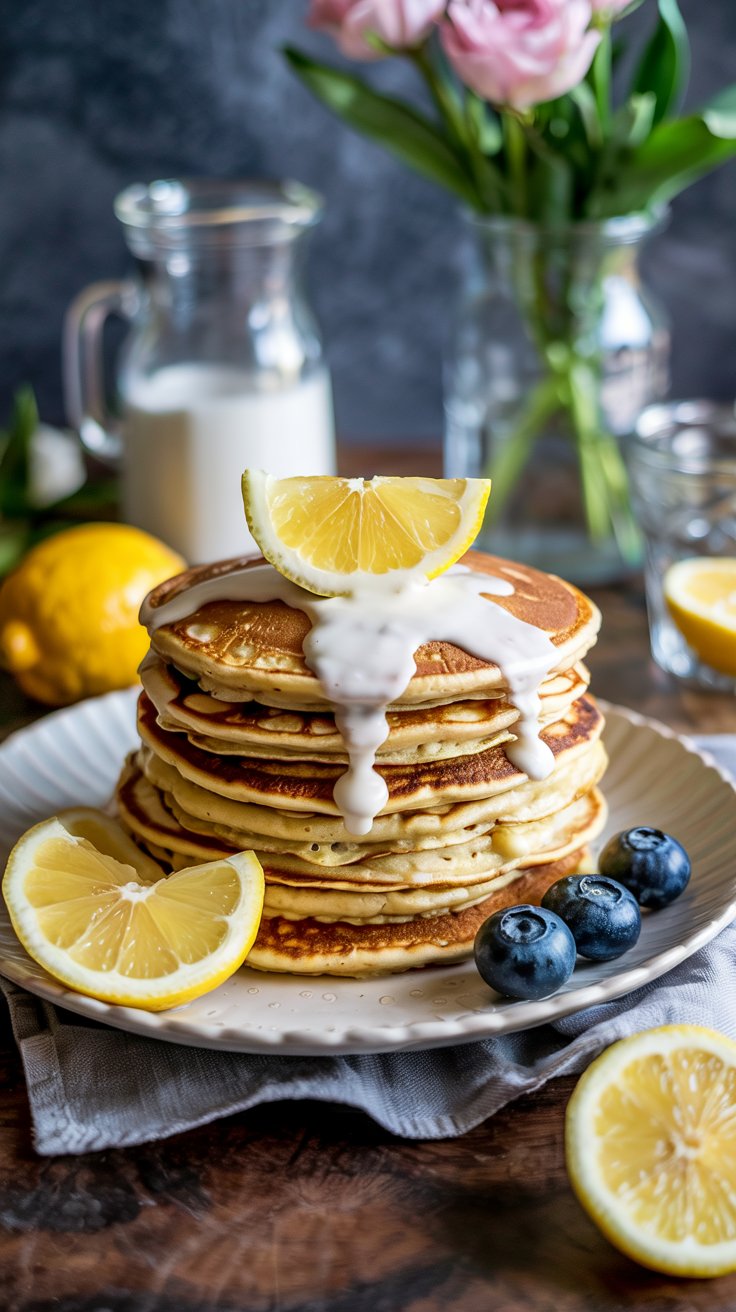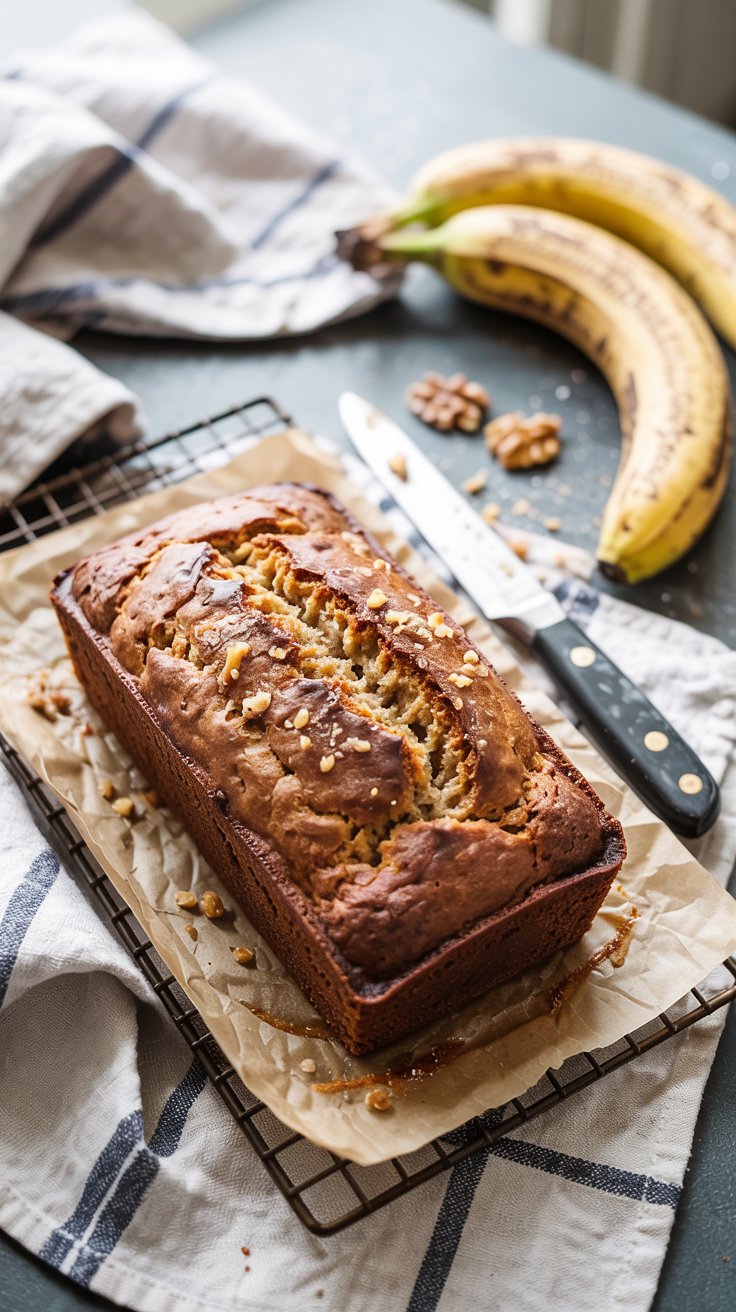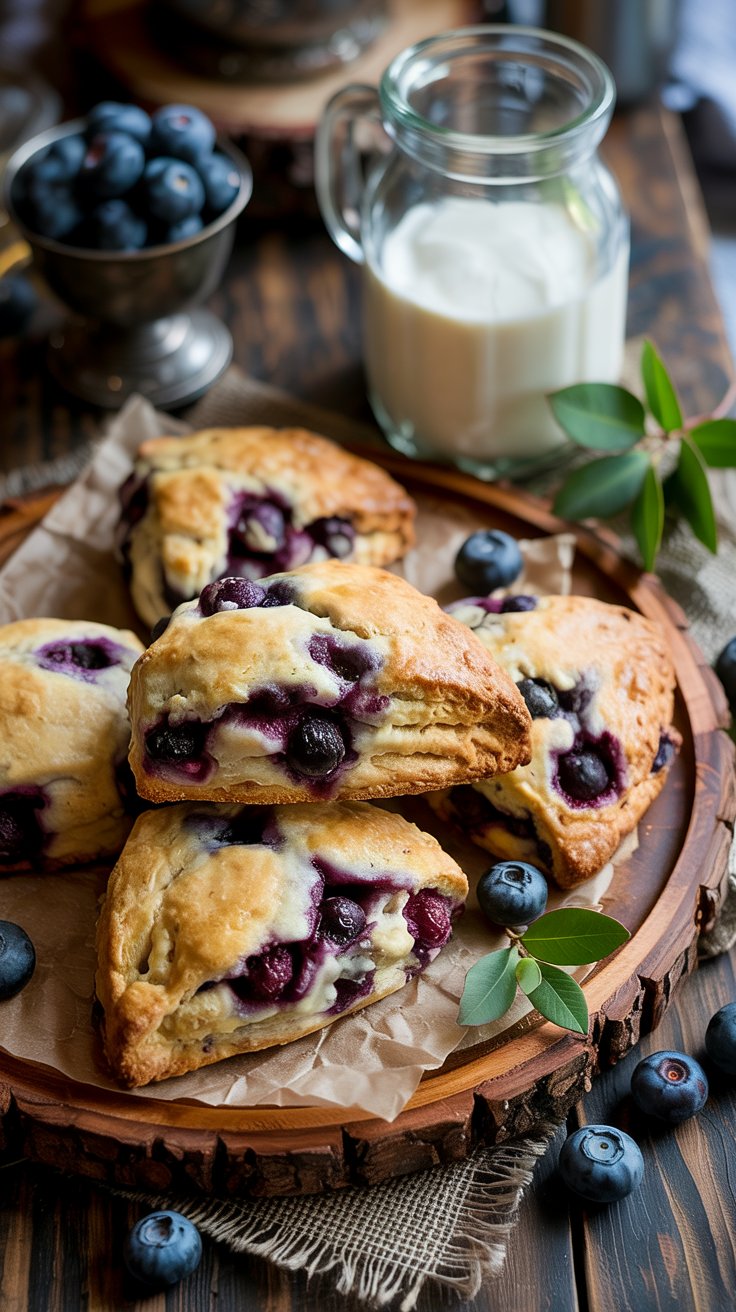German Pancake
If you have never tried a German Pancake, think of it as a cross between a puffy popover and a tender crepe, baked in the oven until it billows at the edges and turns golden. The center stays soft and custardy, just asking for a squeeze of lemon and a dusting of powdered sugar. It is simple, honest, and surprisingly quick. Perfect for slow Saturday mornings when the sun sneaks in and you can hear the oven ticking as it warms.
Unlike stovetop pancakes, this one needs only one pan and a hot oven. You mix, you pour, you watch it rise. That is the magic. And it is incredibly forgiving, which makes it a good recipe to keep in your back pocket for brunch or even a light dinner when you want something cozy and low effort.
Ingredients for this German Pancake
- 3 large eggs, at room temperature if possible
- 1/2 cup all-purpose flour, about 60 g
- 1/2 cup milk, 120 ml (whole or 2 percent both work)
- 1 tablespoon granulated sugar
- 1 teaspoon vanilla extract
- 1/4 teaspoon fine salt
- 2 tablespoons unsalted butter, for the pan
Optional toppings (pick a lane or mix and match):
- Lemon wedges and powdered sugar
- Fresh berries or sliced stone fruit
- Maple syrup or honey
- Greek yogurt or whipped cream
- Cinnamon sugar
Instructions
- Preheat the oven and pan: Place a 10 or 12 inch oven-safe skillet on the middle rack of your oven. Cast iron is ideal, but a metal cake pan or heavy skillet works too. Preheat the oven to 450 F or 230 C. Let the pan heat with the oven so it gets ripping hot.
- Make the batter: In a blender, combine the eggs, flour, milk, sugar, vanilla, and salt. Blend until smooth, about 15 to 20 seconds. No blender at hand? Whisk in a bowl until completely lump free. A few minutes of whisking is worth it for a silky texture.
- Let it rest briefly: Set the batter aside for 10 minutes while the oven finishes heating. This short rest relaxes the flour and helps the pancake puff nicely. If your eggs and milk were cold, the rest also takes off the chill.
- Melt the butter in the hot pan: Carefully remove the hot skillet from the oven and add the butter. It should melt instantly. Swirl to coat the bottom and sides. You want a glossy, buttered surface so the pancake slides up the edges.
- Pour and bake: Pour the batter into the center of the pan and return it to the oven right away. Bake for 13 to 15 minutes, until the edges are towering and deeply golden and the center is set but custardy. Try not to open the oven door, since heat and steam are what make it rise.
- Serve immediately: The German Pancake will slump as it cools. That is normal. Bring it to the table hot, cut into wedges, and add your favorite toppings. I love lemon and powdered sugar for a bright, simple finish. Berries and a drizzle of maple syrup make it more dessert-like, in a very good way.
Little tips that help:
- Room temperature eggs and milk puff higher. If you forgot, set eggs in warm water for 5 minutes and microwave the milk for 10 to 15 seconds until slightly warm.
- Metal pans heat faster than glass. If using glass, preheat a touch longer and watch the bake time near the end.
- For a savory spin, skip the sugar and vanilla, add a pinch of black pepper, then finish with grated cheese and herbs.
Cook and Prep Times
- Prep time: 10 minutes
- Rest time: 10 minutes
- Cook time: 13 to 15 minutes
- Total time: about 35 minutes
- Makes: 1 large pancake, serves 2 to 3
Nutritional information
Approximate per serving, assuming 3 servings and no toppings:
- Calories: about 240 to 260
- Carbohydrates: 21 g
- Protein: 9 g
- Fat: 13 g
- Fiber: 1 g
- Sodium: 220 mg
These numbers are estimates and will vary with the milk you use, the exact butter absorbed by the pancake, and any toppings. Lemon and powdered sugar add minimal calories, while syrup, whipped cream, or extra butter will increase them.
Frequently asked questions
Why did my German Pancake not puff up much?
Usually it comes down to temperature. The pan or the oven was not hot enough, or the batter was very cold. Make sure the skillet is preheated in the oven until the butter melts instantly on contact. Use room temperature eggs and milk if you can, or let the batter rest on the counter for 10 minutes. Also, avoid opening the oven door during baking. Steam is your friend here, so you need that steady heat to keep the rise going.
Can I make the batter ahead of time?
Blend or whisk the batter and refrigerate it for up to 24 hours. When you are ready to bake, give the batter a quick whisk to recombine, then let it sit on the counter for 15 minutes to take off the chill. Preheat the skillet well, then bake as directed. This is a nice move for weekday mornings when you want hot breakfast without the morning mess.
Do I need a cast iron skillet, or can I use another pan?
Cast iron is great for heat retention and browning, but it is not mandatory. A metal cake pan, pie dish, or oven-safe stainless skillet works too. Preheat the pan with the oven so it is very hot, and grease it generously with butter. If using glass, it may bake a bit slower, so keep an eye on color in the last few minutes. The goal is deep golden edges and a set center.
German Pancake
3
servings10
minutes15
minutes260
kcalIf you have never tried a German Pancake, think of it as a cross between a puffy popover and a tender crepe, baked in the oven until it billows at the edges and turns golden. The center stays soft and custardy, just asking for a squeeze of lemon and a dusting of powdered sugar. It is simple, honest, and surprisingly quick. Perfect for slow Saturday mornings when the sun sneaks in and you can hear the oven ticking as it warms.
Ingredients
3 large eggs, at room temperature if possible
1/2 cup all-purpose flour, about 60 g
1/2 cup milk, 120 ml (whole or 2 percent both work)
1 tablespoon granulated sugar
1 teaspoon vanilla extract
1/4 teaspoon fine salt
2 tablespoons unsalted butter, for the pan
- Optional toppings (pick a lane or mix and match):
Lemon wedges and powdered sugar
Fresh berries or sliced stone fruit
Maple syrup or honey
Greek yogurt or whipped cream
Cinnamon sugar
Instructions
- Preheat the oven and pan: Place a 10 or 12 inch oven-safe skillet on the middle rack of your oven. Cast iron is ideal, but a metal cake pan or heavy skillet works too. Preheat the oven to 450 F or 230 C. Let the pan heat with the oven so it gets ripping hot.
- Make the batter: In a blender, combine the eggs, flour, milk, sugar, vanilla, and salt. Blend until smooth, about 15 to 20 seconds. No blender at hand? Whisk in a bowl until completely lump free. A few minutes of whisking is worth it for a silky texture.
- Let it rest briefly: Set the batter aside for 10 minutes while the oven finishes heating. This short rest relaxes the flour and helps the pancake puff nicely. If your eggs and milk were cold, the rest also takes off the chill.
- Melt the butter in the hot pan: Carefully remove the hot skillet from the oven and add the butter. It should melt instantly. Swirl to coat the bottom and sides. You want a glossy, buttered surface so the pancake slides up the edges.
- Pour and bake: Pour the batter into the center of the pan and return it to the oven right away. Bake for 13 to 15 minutes, until the edges are towering and deeply golden and the center is set but custardy. Try not to open the oven door, since heat and steam are what make it rise.
- Serve immediately: The German Pancake will slump as it cools. That is normal. Bring it to the table hot, cut into wedges, and add your favorite toppings. I love lemon and powdered sugar for a bright, simple finish. Berries and a drizzle of maple syrup make it more dessert-like, in a very good way.


